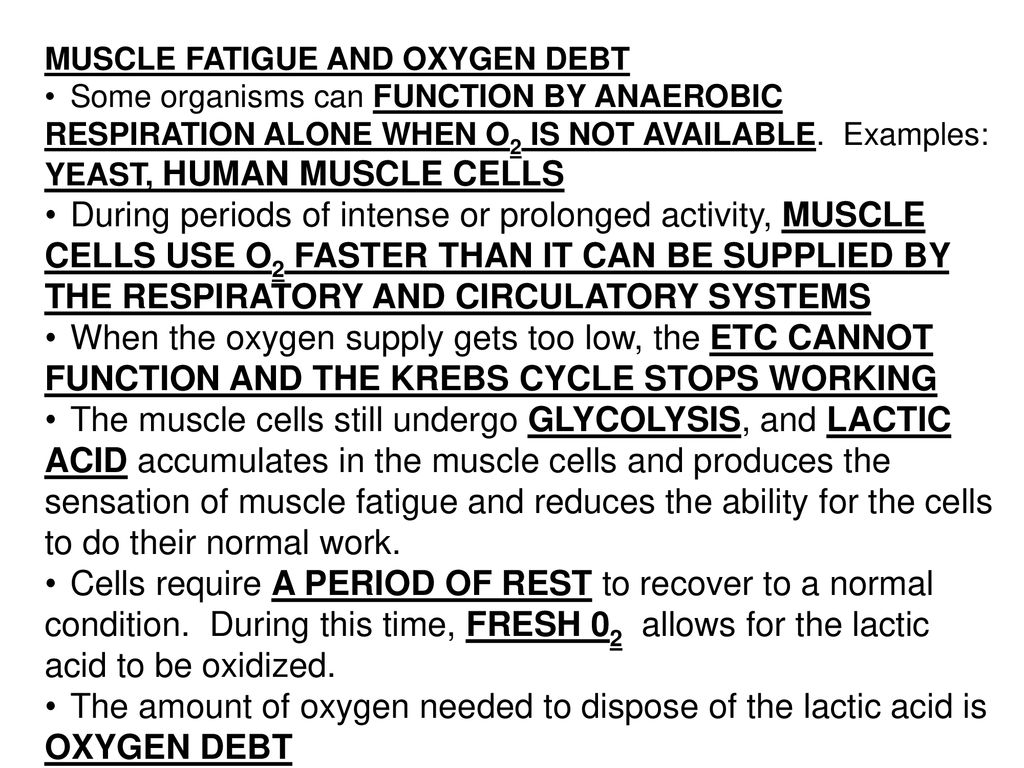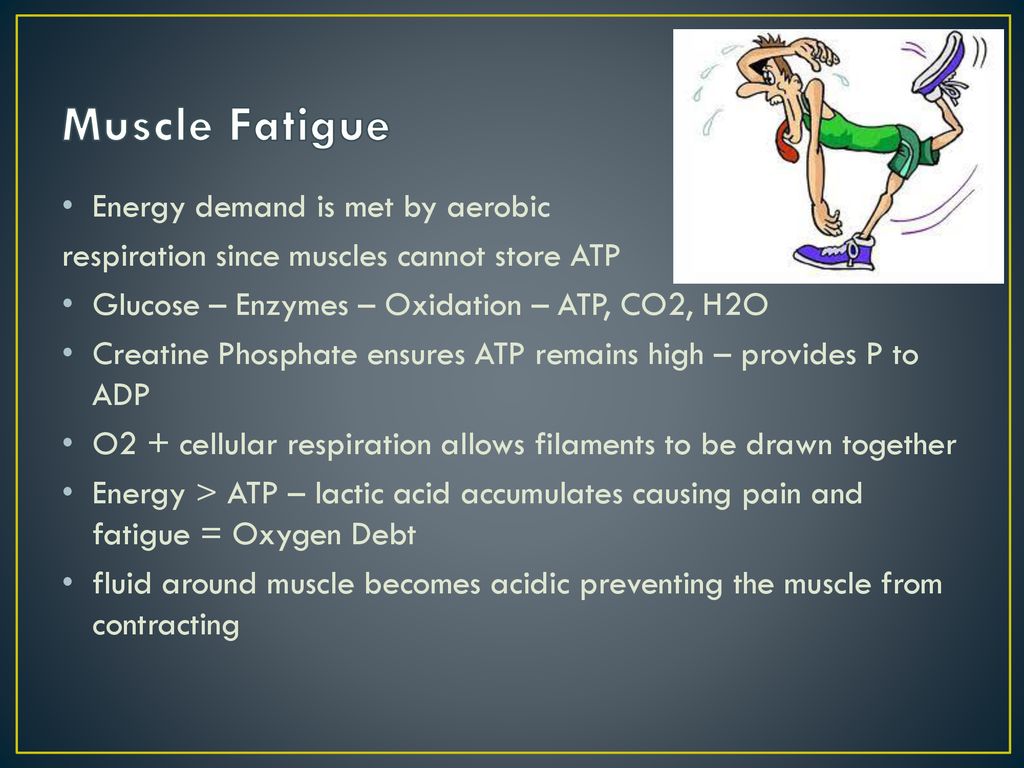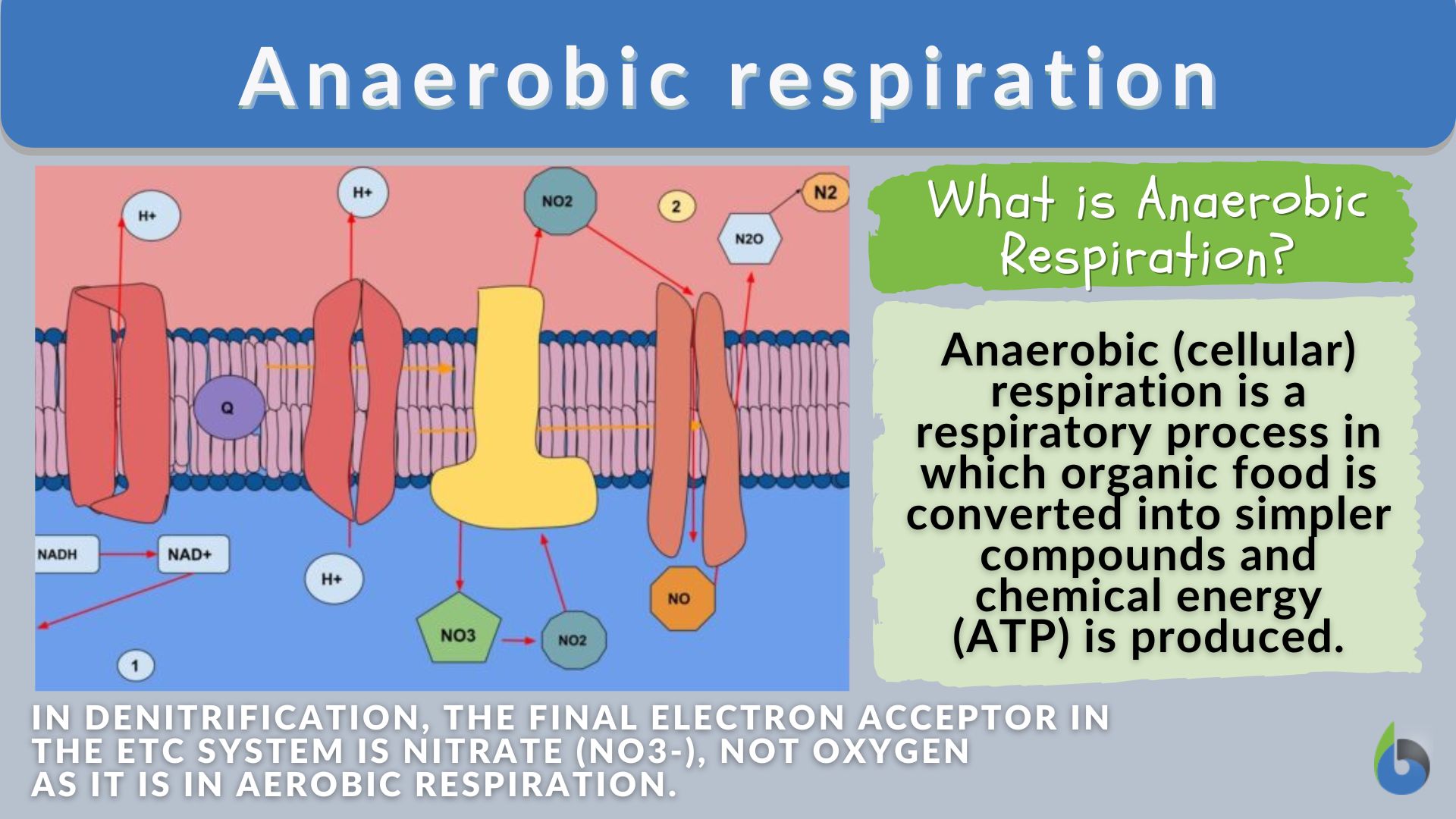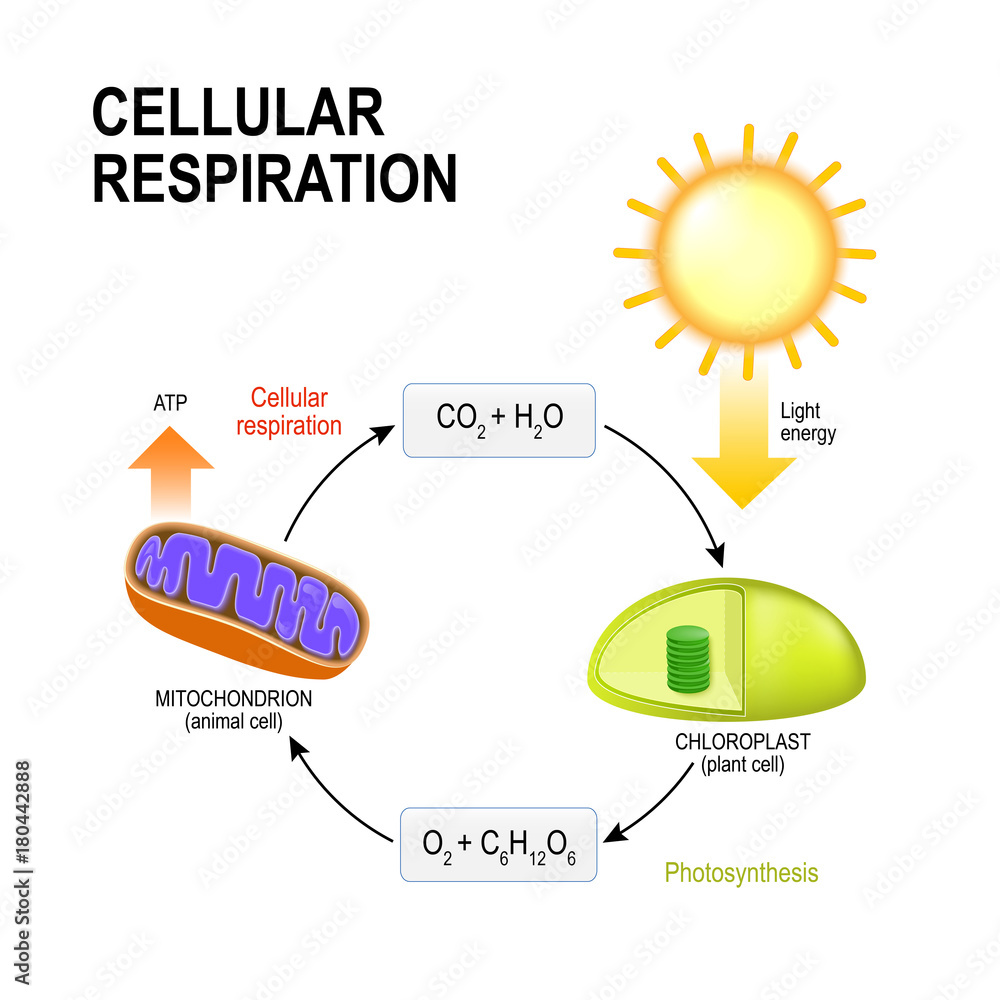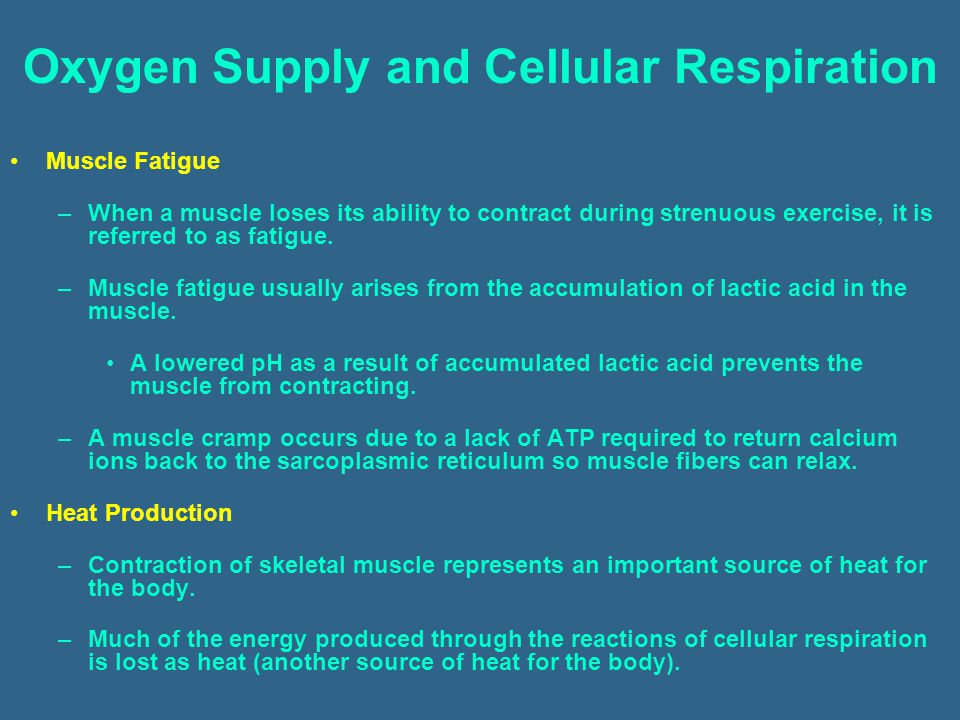What Is The Relationship Between Muscle Fatigue And Cellular Respiration
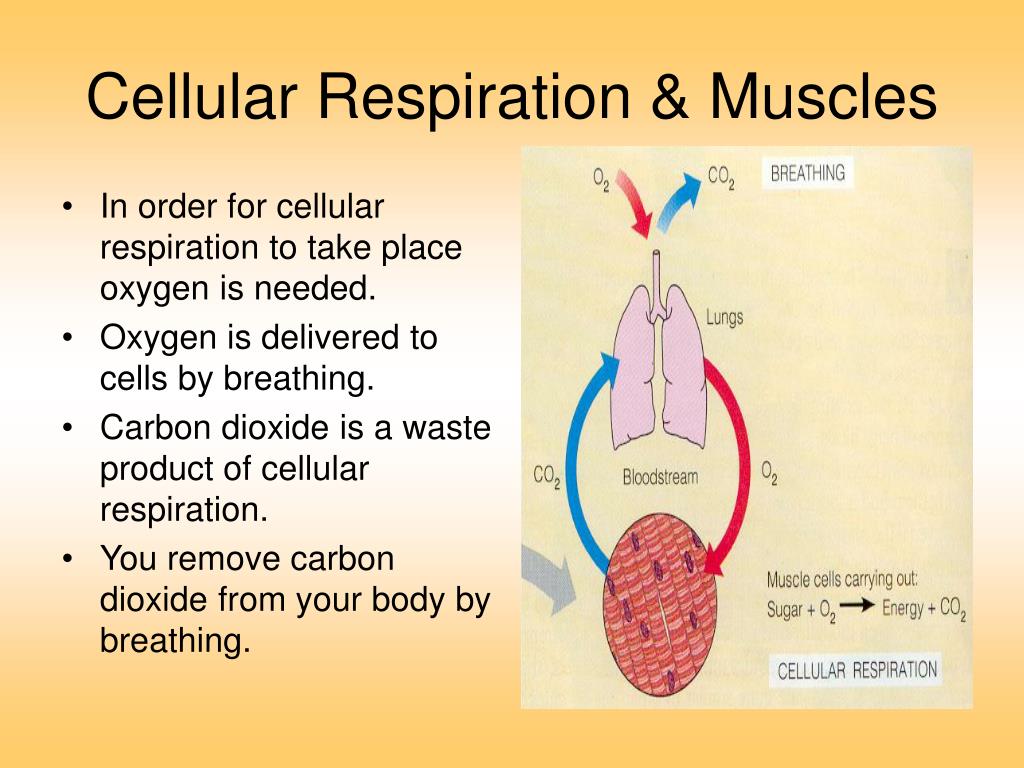
The searing pain, the trembling limbs, the frustrating inability to push further – muscle fatigue is a universal experience for athletes and everyday individuals alike. But beneath this familiar sensation lies a complex interplay of biochemical processes, with cellular respiration, the very engine of our cells, playing a central role. Understanding this relationship is not just academic; it holds the key to optimizing athletic performance, developing treatments for neuromuscular disorders, and improving overall human health.
At its core, this article explores the intricate link between muscle fatigue and cellular respiration. We delve into how the body's energy production pathways respond to increasing demands during physical activity, ultimately leading to fatigue. Examining the roles of oxygen, glucose, and metabolic byproducts, the goal is to shed light on the processes involved in muscle fatigue.
The Basics of Cellular Respiration and Muscle Function
Muscles contract through the sliding of protein filaments, a process powered by ATP (adenosine triphosphate), the cell's energy currency. Cellular respiration is the process by which cells break down glucose (and other fuels) in the presence of oxygen to generate ATP.
This complex process involves several stages, including glycolysis, the Krebs cycle, and the electron transport chain, each contributing to ATP production. When muscles are at rest, the demand for ATP is low, and cellular respiration efficiently meets this demand.
The Shift Under Strain: Energy Demands and Oxygen Supply
During intense exercise, the demand for ATP increases dramatically, sometimes exceeding the capacity of cellular respiration to keep pace. This is where the problems start that ultimately lead to fatigue. The body must then tap into other energy sources.
One such source is creatine phosphate, which can quickly donate a phosphate group to ADP (adenosine diphosphate) to regenerate ATP. However, creatine phosphate stores are limited and are rapidly depleted.
Anaerobic Metabolism and Lactic Acid Buildup
When oxygen supply is insufficient to meet energy demands, cells resort to anaerobic metabolism. This process breaks down glucose without oxygen, producing ATP but also generating lactic acid as a byproduct.
While lactic acid can be converted back into glucose by the liver, its accumulation in muscles contributes to the burning sensation and fatigue. Traditionally, lactic acid was believed to be the primary cause of muscle fatigue, but that understanding is changing.
Modern research shows that lactic acid itself might not be the sole culprit, as it can be used as fuel by other tissues. However, the associated increase in acidity (lower pH) within the muscle cell can interfere with various enzymatic reactions, ultimately hindering muscle contraction.
The Complex Web of Fatigue: Beyond Lactic Acid
The current scientific understanding of muscle fatigue recognizes that it's multifactorial. It goes beyond just lactic acid accumulation. Factors such as the depletion of glycogen (stored glucose) in muscles, the buildup of inorganic phosphate, and alterations in calcium handling within muscle cells are all considered significant contributors.
Glycogen depletion means that the muscle runs out of its primary fuel source. This slows down ATP production, hindering muscle function.
Inorganic phosphate, released during ATP breakdown, can interfere with muscle contraction by binding to calcium and slowing down the release of phosphate from myosin. This process makes it more difficult for muscle fibers to contract and relax.
The Role of Central Nervous System Fatigue
It's also important to acknowledge the role of the central nervous system (CNS) in fatigue. The brain and spinal cord can also experience fatigue, reducing the activation of muscles, and protecting the body from injury.
This is often called central fatigue. This type of fatigue is characterized by a decreased voluntary activation of muscle fibers, meaning the brain simply isn't sending as strong a signal to the muscles to contract.
This protective mechanism can manifest as feelings of tiredness, reduced motivation, and a decreased ability to generate force, even before the muscles themselves are completely exhausted.
Current Research and Future Directions
Ongoing research continues to refine our understanding of muscle fatigue. Scientists are investigating the specific roles of various metabolites, the influence of mitochondrial function, and the impact of different training regimens on fatigue resistance.
Recent studies have focused on the role of reactive oxygen species (ROS), which are produced during intense exercise. While ROS can contribute to muscle damage, they also seem to play a signaling role in adaptation to exercise.
Researchers are exploring the use of targeted interventions, such as nutritional strategies and pharmacological agents, to enhance mitochondrial function and reduce fatigue. Improving mitochondrial efficiency could help optimize ATP production and delay the onset of fatigue.
Conclusion: Optimizing Performance and Addressing Fatigue-Related Disorders
The relationship between muscle fatigue and cellular respiration is a complex and dynamic interplay of biochemical processes. Understanding this relationship allows us to develop more effective strategies for optimizing athletic performance.
It can also lead to better treatments for neuromuscular disorders characterized by chronic fatigue. This knowledge is crucial for improving overall human health and well-being.
As research progresses, we can anticipate even more targeted interventions aimed at enhancing energy production, reducing metabolic byproducts, and ultimately combating muscle fatigue, allowing us to push the boundaries of human physical potential.










